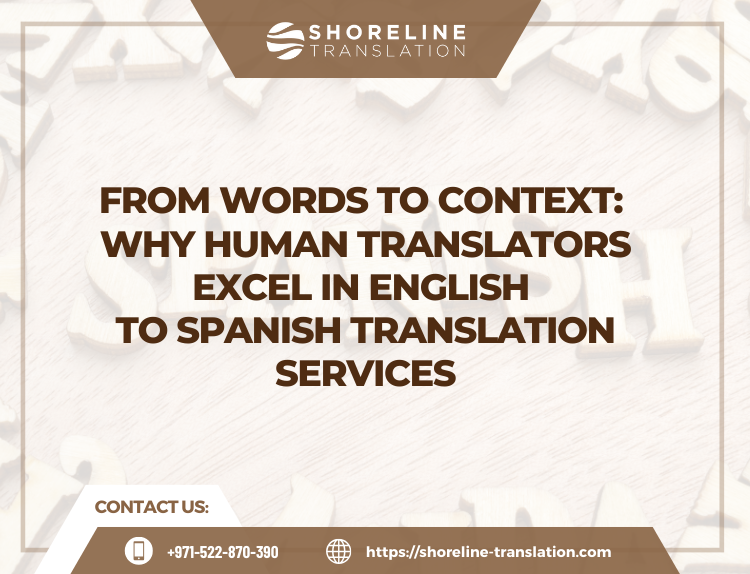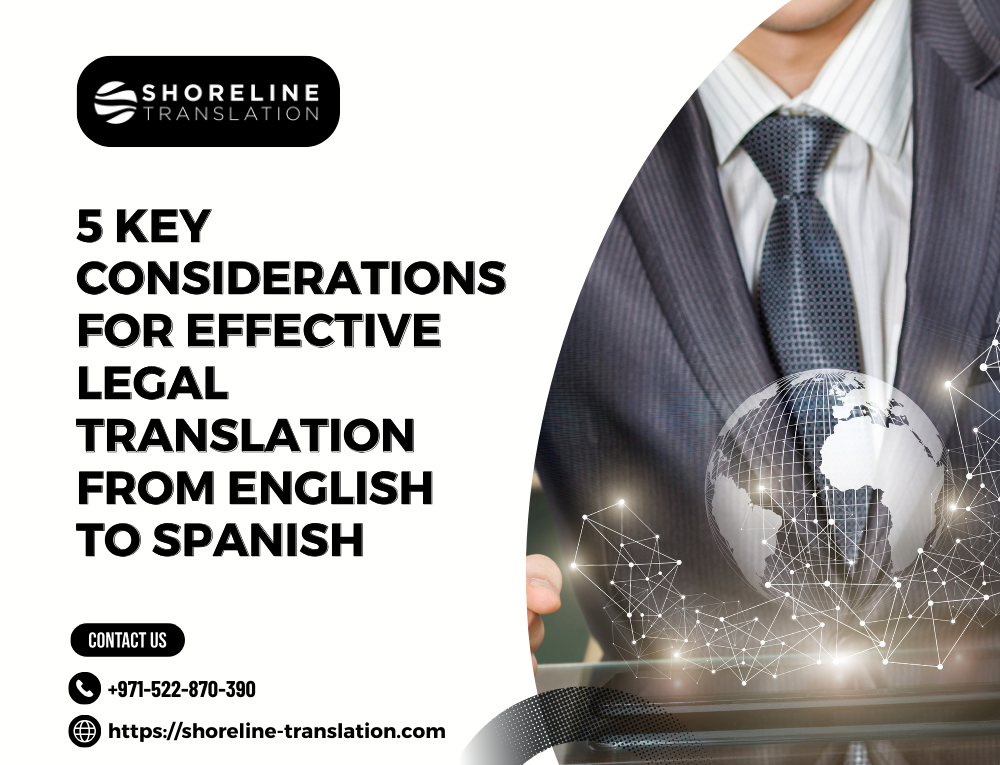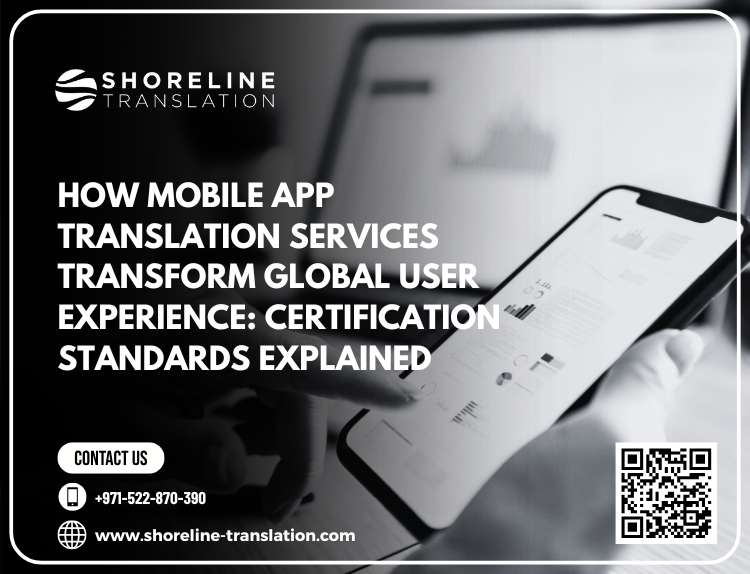Table of Contents
ToggleFrom Words to Context: Why Human Translators Excel in English to Spanish Translation Services
¡Hola amigos! Are you ready to embark on a linguistic journey that transcends borders and connects cultures? Bienvenidos to the world of English to Spanish translation services, where words become bridges between two vibrant languages. While technology has made great strides in machine translation, there’s something truly special about the power of human translators.
In this blog post, we’ll dive into the fascinating realm of English to Spanish translation services and explore why human translators excel in this field. From understanding the challenges of translation to unraveling the importance of context, we’ll uncover how these language virtuosos ensure accuracy, cultural appropriateness, and regional variations. So grab your sombrero and let’s get started! ¡Vamos!

The Benefits of Human Translators in English to Spanish Translation in Bullet Points
1. Language Mastery: Human translators possess a deep understanding of both English and Spanish, allowing them to capture the nuances, idioms, and cultural references that may get lost in machine translation. They are not limited to word-for-word translations but instead grasp the essence of the message and convey it fluently.
2. Contextual Interpretation: Translating goes beyond replacing words from one language to another; it requires comprehending the context in which they are used. Human translators can interpret ambiguous or complex phrases by considering the broader meaning and intention behind them, ensuring accurate communication.
3. Cultural Sensitivity: Culture plays a significant role in language, influencing expressions, customs, and social norms. A human translator understands these subtleties and ensures that translated content is culturally appropriate for the target audience. This helps avoid potential misunderstandings or offensive content that could arise from literal translations.
4. Error Detection & Quality Assurance: One of the most valuable benefits of human translators is their ability to spot errors and inconsistencies during translation processes. They have an eye for detail and employ rigorous quality assurance methods to deliver accurate and polished translations that meet industry standards.
Intriguingly combining linguistic expertise with cultural awareness, human translators offer unparalleled advantages when it comes to English to Spanish translation services. Their mastery of languages enables them to transform the text into meaningful messages while preserving context-specific elements like idiomatic expressions or regional variations.
Understanding the Challenges of English to Spanish Translation
When it comes to English to Spanish translation, there are a few challenges that translators face. One of the main challenges is the vast difference between both languages in terms of grammar and sentence structure. English tends to be more straightforward, while Spanish often requires the use of subjunctive forms and reflecting gender in nouns.
Another challenge lies in accurately conveying idiomatic expressions and cultural nuances. Translating phrases like “break a leg” or “raining cats and dogs” can be tricky as they may not have an equivalent expression in Spanish. A skilled human translator understands these cultural differences and finds appropriate ways to convey the intended meaning without losing its essence.
Additionally, there are regional variations within the Spanish language itself. Different dialects, accents, slang words, and even vocabulary can vary significantly from one region to another. Human translators who specialize in specific dialects or have extensive knowledge of different regions can ensure accurate translations tailored to their target audience.
Translating documents with technical terminology or specialized jargon poses another challenge for human translators. It requires deep subject matter expertise along with linguistic skills to accurately translate complex concepts into understandable Spanish without losing any crucial details.
Despite these challenges, professional human translators thrive because they possess not only linguistic proficiency but also cultural awareness and adaptability necessary for delivering high-quality English to Spanish translations that effectively convey context-specific meanings.
The Importance of Context in English to Spanish Translation
When it comes to English to Spanish translation services, context is paramount. The importance of context cannot be overstated in the world of language translation. Without a clear understanding of the context, translations can easily lose their intended meaning and impact.
Context helps translators capture the nuances and subtleties of both languages. Words alone do not always convey the full message or intent behind a sentence. It is the surrounding context that provides clarity and ensures accurate translations.
Cultural differences play a significant role in language translation. Each language has its unique cultural perspectives and expressions that may not have direct equivalents in another language. A skilled human translator takes into account these cultural nuances by utilizing their knowledge and experience to provide culturally appropriate translations.
Additionally, understanding the specific domain or subject matter is crucial for accurate translations. Whether it’s legal documents, medical texts, or marketing materials, knowing the industry-specific terminology allows translators to accurately convey information without losing important details.
Taking into consideration regional variations within Spanish is vital for effective translations. Spanish dialects differ from country to country and even within regions of the same country. Human translators are well-versed in these variations and can adapt their translations accordingly so they resonate with target audiences across different regions.
In conclusion, the significance of context cannot be underestimated when it comes to English to Spanish translation services. By considering all aspects mentioned above – linguistic nuance, cultural sensitivity,
subject matter expertise, and regional variations – human translators ensure that translated content retains its intended meaning while being culturally relevant.
Remember: to trust a professional human translator who understands not just words but also contexts!
Human Translators vs Machine Translation: A Comparison
When it comes to English to Spanish translation, the debate between human translators and machine translation is a hot topic. Let’s take a closer look at how these two methods compare:
Accuracy:
– Human translators have an innate understanding of language nuances, cultural context, and idiomatic expressions, which ensures accurate translations.
– Machine translation relies on algorithms and databases that may not always capture the intricacies of language, leading to inaccuracies or misinterpretations.
Contextual Understanding:
– Human translators excel in understanding the context behind words. They consider tone, cultural references, and specific industry terminology.
– Machine translation often struggles with contextual nuances since it primarily focuses on word-to-word translations without considering broader meanings.
Cultural Appropriateness:
– Human translators are well-equipped to adapt translations for their target audience while respecting cultural sensitivities.
– Machine translation lacks cultural awareness and can produce translations that are inappropriate or offensive without human oversight.
Language Evolution:
– Human translators stay updated with evolving languages and trends through continuous learning and immersion in different cultures.
– Machines struggle to keep up with linguistic changes as they rely on pre-programmed data that might become outdated.
In this digital age where time is of the essence, machine translation offers quick results. However when accuracy, context sensitivity, and culturally appropriate content are crucial – human translators stand out!
How Human Translators Ensure Accuracy and Cultural Appropriateness
When it comes to English to Spanish translation services, human translators play a crucial role in ensuring accuracy and cultural appropriateness. But how exactly do they achieve this? Let’s take a closer look.
Human translators possess the linguistic expertise necessary to understand the nuances and intricacies of both languages. They are well-versed in grammar, idioms, and colloquialisms, allowing them to accurately convey the intended meaning of the original text while maintaining cultural sensitivity.
Human translators have an innate understanding of context. They can decipher ambiguous phrases or expressions by considering the broader context of the message. This ensures that translations accurately reflect the intended meaning without losing any subtleties or nuances along the way.
Furthermore, human translators can adapt their translations based on target audience preferences and cultural norms. They know when literal translation may not be appropriate and can make informed decisions about word choices or sentence structure that align with local conventions.
Unlike machine translation which relies solely on algorithms, human translators bring creativity and intuition into their work. They go beyond simply translating words by capturing tone, style, and intention – elements that machines struggle with due to their lack of emotional intelligence.
In conclusion (oops!), human translators excel at providing accurate translations while preserving cultural appropriateness thanks to their linguistic expertise, contextual understanding abilities, adaptation skills for different audiences’ preferences & norms as well as incorporating creativity into their work. Their work goes beyond literal translation by considering tone, style, and intention, resulting in high-quality and culturally appropriate translations that effectively convey the intended message to the target audience.
The Role of Human Translators in Spanish Dialects and Regional Variations
When it comes to English to Spanish translation services, one of the challenges that arises is the need for understanding and accurately translating various dialects and regional variations. This is where human translators truly shine, bringing their expertise and cultural knowledge into play.
In countries like Spain, Mexico, Argentina, and many others across Latin America and Europe, there are distinct dialects with unique vocabulary choices, grammar structures, and pronunciation differences. A machine translation may struggle to capture these nuances effectively.
Human translators have a deep understanding of these regional variations because they have lived or extensively studied in those areas. They can navigate through the intricacies of language usage specific to each region. Whether it’s using “vos” instead of “tú” in certain parts of Latin America or knowing when to use “ustedes” versus “vosotros” in Spain, human translators can ensure accurate translations that resonate with the target audience.
Moreover, human translators are also aware of cultural references embedded within different dialects. They understand slang terms specific to each region and can adapt translations accordingly so that they sound natural rather than awkward or out of place. This level of cultural appropriateness cannot be achieved by machine translation alone.
By working closely with clients who require English to Spanish translation services, experienced human translators take note of any specific requirements regarding dialect preferences. They customize their approach based on client needs while ensuring accurate interpretations that consider both linguistic aspects as well as cultural sensitivities.
So next time you’re seeking professional English to Spanish translation services for your project or business needs – whether it’s a website localization effort or marketing materials targeting a specific region – don’t underestimate the invaluable role played by human translators who excel at capturing the richness found within diverse Spanish dialects and regional variations!
Choosing the Right Translation Service for Your English to Spanish Translation Needs Such as Shoreline Translation
Choosing the right translation service for your English to Spanish translation needs is crucial to ensure accurate and high-quality results. With so many options available, it can be overwhelming to determine which one is the best fit for you. However, Shoreline Translation stands out as a top choice in providing exceptional English to Spanish translation services.
Shoreline Translation boasts a team of highly skilled and experienced human translators who are fluent in both English and Spanish. This expertise allows them to understand not only the words but also the context behind them, resulting in translations that accurately convey meaning and intention.
Furthermore, Shoreline Translation offers a wide range of specialized services tailored to various industries such as legal, medical, business, and more. Whether you need legal documents translated or marketing materials localized for the Spanish-speaking market, their professionals have the knowledge and understanding of industry-specific terminology.
In addition to their expertise and specialization, Shoreline Translation prides itself on providing efficient turnaround times without compromising quality. They understand the importance of timely translations in today’s fast-paced world and strive to meet deadlines while maintaining accuracy.
Choosing Shoreline Translation means partnering with a reliable company known for its commitment to customer satisfaction. Their transparent pricing structure ensures no hidden costs or surprises along the way.
When it comes to finding the right translation service for your English to Spanish translation needs, consider Shoreline Translation as your trusted partner in delivering accurate translations that resonate with your target audience.
FAQs About English to Spanish Translation Services
1. Can I use online translation tools instead of hiring a human translator?
While online translation tools may seem convenient, they often fall short of providing accurate and contextually appropriate translations. Machine translations cannot understand nuances, cultural references, and idiomatic expressions that are crucial for English to Spanish translation services. Human translators have the expertise to capture these subtleties and ensure a high-quality translation.
2. How do human translators maintain accuracy in their translations?
Human translators go through a rigorous process of research, context analysis, and proofreading to ensure accuracy in their translations. They possess an in-depth understanding of both languages involved and utilize their linguistic skills to convey the intended meaning accurately. This attention to detail ensures that your translated content is error-free.
3. Do human translators consider regional variations or dialects?
Absolutely! Human translators are well-versed in regional variations and dialects within the Spanish language. They take into account factors such as cultural differences, local slang, and specific terminology used by different regions or countries where Spanish is spoken. This level of customization ensures that your translated content resonates with your target audience.
4. How can I choose the right English to Spanish translation service for my needs?
When choosing a translation service provider like Shoreline Translation for your English to Spanish translation needs, look for one with experienced human translators who specialize in this language pair. Check their credentials, reviews from previous clients, turnaround time, pricing options, and customer support availability.
Conclusion
When it comes to English to Spanish translation services, the benefits of human translators cannot be overstated. They possess the linguistic skills and cultural understanding necessary to accurately convey meaning and context between these two languages. While machine translation has come a long way, it still falls short when it comes to capturing the nuances and intricacies of language.
Human translators excel at understanding the challenges of English to Spanish translation, including idiomatic expressions, regional variations, and cultural appropriateness. They have a deep appreciation for the importance of context in communication and ensure that every translated word carries its intended meaning.
In comparison to machine translation, human translators offer unmatched accuracy and precision. They meticulously review each sentence, ensuring that not only is it grammatically correct but also culturally appropriate. Human translators can adapt their translations based on dialects or regional variations, resulting in content that resonates with specific target audiences.
Choosing the right translation service for your English to Spanish needs is crucial. Look for reputable providers like Shoreline Translation who employ experienced human translators with a strong track record in delivering high-quality translations. This ensures that your message will be effectively conveyed while maintaining accuracy and cultural sensitivity.
In conclusion (without using those exact words), if you want your English content translated into Spanish seamlessly while preserving its intended meaning and impact, entrusting this task to skilled human translators is a wise choice. With their expertise in bridging language barriers, they can help you reach new audiences across different cultures effortlessly.
So why settle for anything less than excellence? Opt for professional human translators who understand both languages deeply – because sometimes words alone just aren’t enough!





